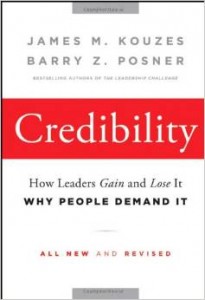The world waited with great anticipation: Facebook CEO Mark Zuckerberg’s appearance before the Congressional Commerce and Judiciary Committee was finally beginning on April 10, 2018. Zuckerberg was summoned to discuss Facebook’s “privacy” policy and data breaches, which left millions of Facebook users’ personal data exposed to global trolls.
Rather than focusing on what Zuckerberg was saying, the media and late night pundits focused on something quite different: The Suit. Zuckerberg had traded in his signature gray tee shirt, blue jeans and sneakers for a more corporate look. Headlines focused on The Suit. The Washington Post headline read: Mark Zuckerberg is one of the suits. Now he’d better learn to get comfortable in one.
As the news media clamored to get the best shot of the “new and improved” Zuckerberg, I expected a reporter from E News to pop up ala runway style and ask, “Who are you wearing today, Mark?” To which Zuckerberg would confidently reply, “Marc Jacobs. That’s Marc with a c.” The brilliance of his dazzling smile would shatter the camera lens as he continued walking to the hearing.
But I digress.
What the media is paying such close attention to is known as Wardrobe Engineering. Defined as “how clothing and accessories are used to create a certain image,” what image do you think Zuckerberg was going for? The “I’m not guilty” image? The “I’m a successful, responsible American entrepreneur” image? The “You can trust me” image? The “I’m just like you” image? The New York Times called it the “I’m sorry suit.” The Times even created a “greatest suits appearances” slide show just for The Suit. Only time will tell how The Suit is ultimately interpreted by Congress.
Every politician, titan of industry and celebrity knows how to effectively wardrobe engineer. We all know that color plays an important role when you represent a certain political party, like how often Republicans wear red and Democrats wear blue. It’s no accident. And red, white and blue, well, that is just so absolutely, positively American, and safe. Then everyone will love you and vote for you, right?
Will wardrobe engineering save Mark Zuckerberg, though? It will take a lot more than a stylish suit to convince Congress. Or will it?
Watching this event unfold in the national news, I was reminded of my favorite graduate-level course on rhetorical criticism. The course’s book, Rhetorical Criticism: Exploration and Practice, was written by an academic communication scholar and rhetorical criticism expert, Dr. Sonja K. Foss. She defines rhetorical criticism as “a process of thinking about symbols, discovering how they work, why they affect us, and choosing to communicate in particular ways as a result of the options they present.” I remember vividly the moment when I understood the process of rhetorical criticism. It was as if a magic force cleansed my eyes so I could see more clearly and completely. When you look at the world and major events as they unfold, through the lens of rhetorical criticism, every piece of the picture – verbal and nonverbal communication, physical objects, and symbols – all take on a whole new meaning.
In her book, Foss emphasizes that rhetoric goes beyond just written and spoken discourse. According to Foss, symbolism is found in all forms of communication, such as “speeches, essays, conversations, poetry, novels, stories, television programs, films, art, architecture, plays, music, dance, advertisements, furniture, public demonstrations, and dress.” And I would add public hearings. In graduate-level rhetorical criticism classes right now, even though it’s nearing the end of the semester, students are sinking their teeth into this juicy news story and extracting meaning from every blink, gesture, vocal nuance, physical stance, room set-up, and yes, attire.
Professional image icon John T. Molloy wrote in his 1975 seminal book, Dress for Success, “Dress for the job you want, not for the job you have.” In Zuckerberg’s case, we’ll see where his wardrobe engineering leads him.
What professionals can learn from this very public hearing is that when it comes to telling your part of the story, it’s not just what The Suit looks like, it’s the meaning behind The Suit. A bigger question to ask is: What captures the essential, most important element: The truth?
Photo credit: Igor Ovsyannykov on Unsplash.com













